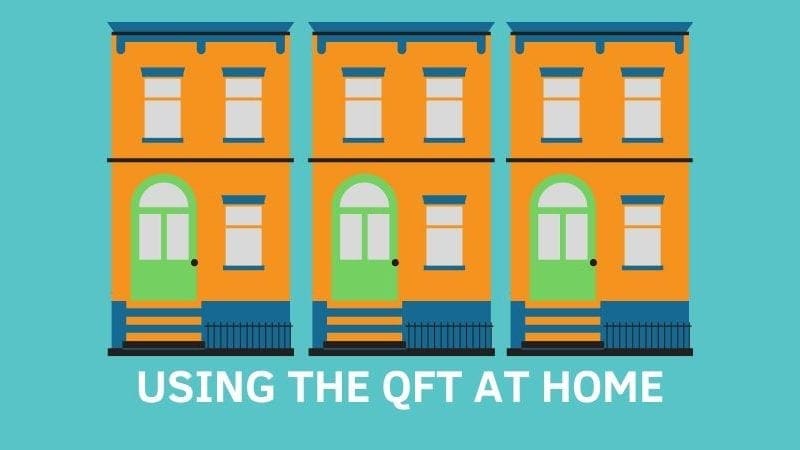This is the second in a series of two posts on using the Question Formulation Technique (QFT) at home with children during the COVID-19 pandemic. Anyone — parents, teachers, guardians, grandparents, or even fun uncles — can use the QFT to engage children in deep, creative thinking. Curiosity is a powerful tool for navigating and understanding all settings and situations, even uncertain and difficult ones. (Perhaps especially uncertain and difficult ones.)
For more on the Question Formulation Technique process, visit our resources library or this introductory post. The Question Focus, or QFocus, is the prompt about which children ask questions. A QFocus can be almost anything — an image, statement, experience, etc. — as long as it is not a question. The ideas below give you a suggested QFocus to use and then some next steps to take after children ask questions.
Find more: Question Focus Ideas to Use at Home
1) Give your child a QFocus that gets them thinking about their voice, story, and relationship with reading and writing. You might try a QFocus like, “Grab the Mic: Tell Your Story” or, “Write. Right. Rite.” Then, tune in to the new biweekly video series by Jason Reynolds, National Ambassador for Young People’s Literature. It’s called, “Write. Right. Rite.” You can find Reynold’s Grab the Mic Resource Guide online, developed in collaboration with the Library of Congress, the Children’s Book Council, and Every Child a Reader. Reynolds gives kids a new prompt or topic in every video that encourages them to express themselves and get creative. Each new topic could easily become another QFocus. Click here for more information.
2) Check out Google Arts and Culture for an amazing range of virtual tours and interactives. You can explore things like the International Space Station, Taj Mahal, a collection of New York street art murals, and famous art museums in Italy. Preview the collection ahead of time and select an image as a QFocus. Or, use a statement like, “Living aboard a space station.” Work with children to look for clues and answers as they take the virtual tour. The international space station 360 degree tour is particularly immersive and interactive. You’ll feel what it’s like as an astronaut, navigating tight passageways and walls full of wires and equipment.
3) What will historians of the future use to study the COVID-19 pandemic? The articles, testimonials, videos, photos, and tweets of today. Engage children in creating the raw stuff of history and contributing to the historical record. Children can develop their own questions to use as journal prompts that they can respond to in writing or in video. Try a tool like screencastify, which is free and easy to use for videos up to 5 minutes. Their journal becomes a piece of history. A QFocus might be, “Life during the COVID-19 pandemic” or, “Questions a historian of the future might ask about my life today.” Thank you to history teachers and librarians working with primary sources for this idea!
4) The parks may be closed, but live webcams and virtual tours are open! Explore all kinds of natural environments, from an underwater live webcam view of the fish and water plants in Channel Islands, California, to the Shenshuping Gengda Panda Center in China’s Wolong Valley and live views of the geysers at Yellowstone National Park in Wyoming. Urge your child to spend a few minutes asking questions about the environment they’re about to e-visit to build their curiosity and engagement. Or, use the “visit” itself as the QFocus and see what questions children have after watching the live feed for 5 to 10 minutes. Questions may lead to some research about geology and preservation, fiction or nonfiction reading about different animals, or more National Parks Service tours. Start at the National Parks Service virtual tour page or Explore.com’s wide range of live animal webcams from animal rescues and sanctuaries around the world (you’ll find everything from puppies, owls, hummingbirds to ospreys, sharks and olifants).
5) If your block is anything like mine, you may have seen powerful acts of resiliency, caring, and hope from the youngest residents in the neighborhood. With incredible creativity, children across the country are finding ways to contribute: sending cards to residents in assisted care facilities, scrawling messages of hope in chalk on sidewalks, hanging rainbow and peace signs in windows, and cheering first responders and essential workers. Try out the QFocus, “People are staying apart, but they are still finding ways to be connected” with children. Armed with new questions, your child might then head over to a free online exploration (there is a printable version too) from inquireEd. Kids explore case studies of different ways people are taking to uplift their communities, make their own action plan, and then take action. Each step of the activity is designed to take only 20 minutes and inquireEd provides separate resources for early elementary, late elementary, and middle school learners. Take advantage of the opportunity to help kids find even small ways to take action and positively contribute to their communities.
Have you tried any of these ideas out? Do you have other suggestions? We’d love to hear from you. Share some questions with us on Twitter @rightquestion #QFTatHome or email us at contact@rightquestion.org.
